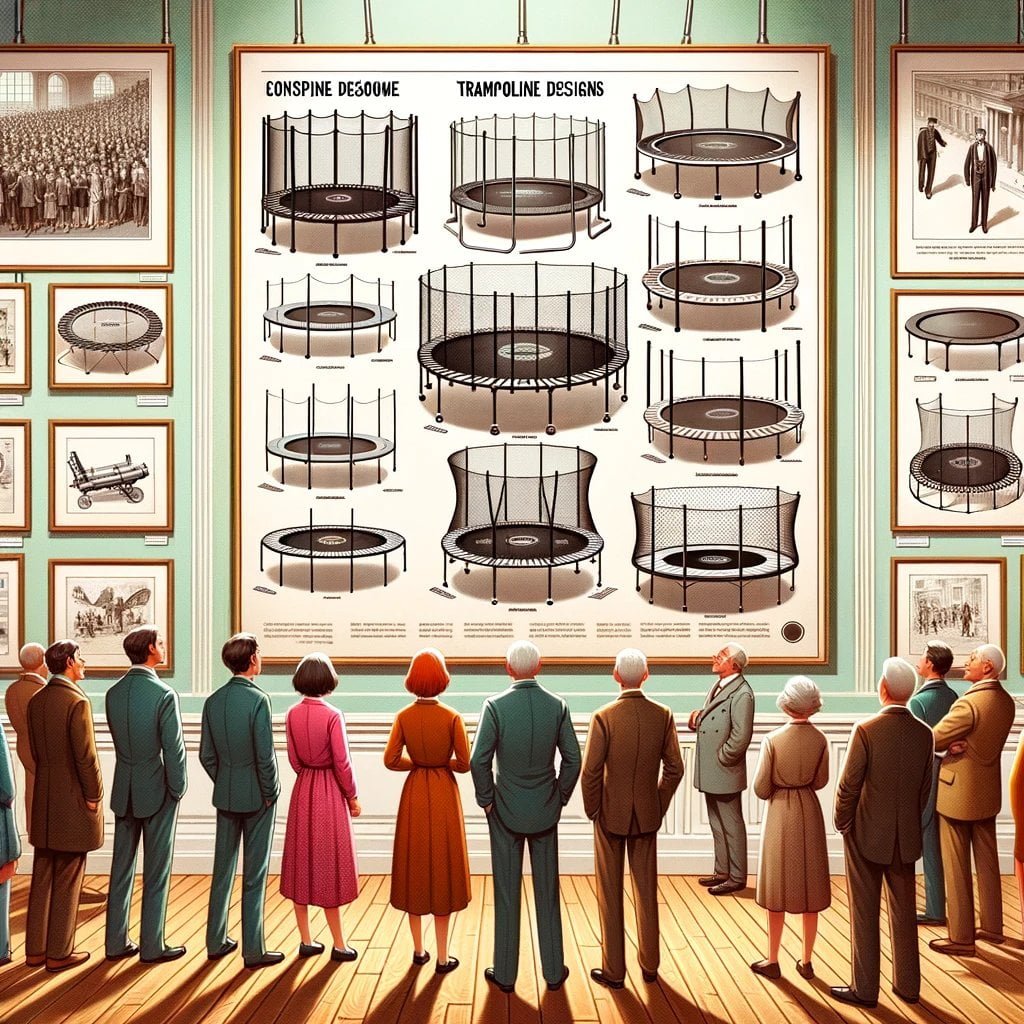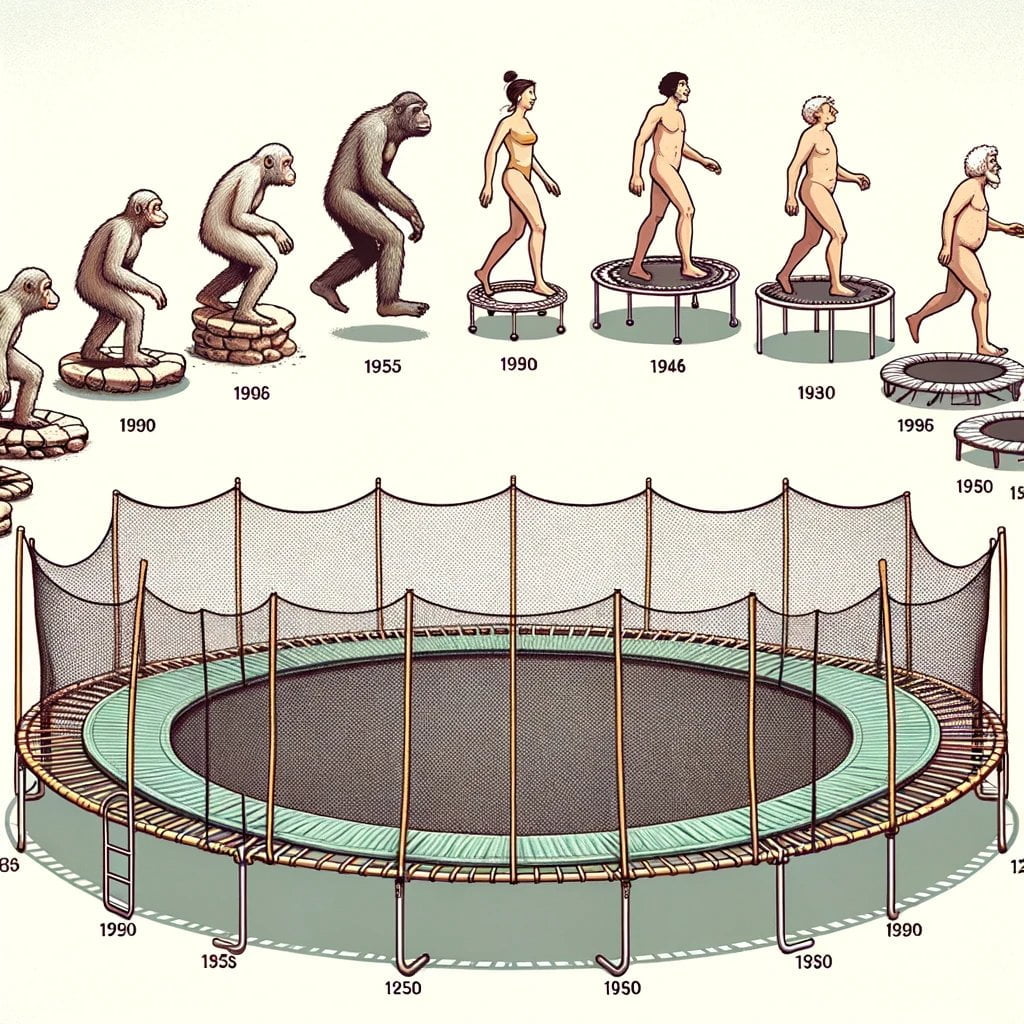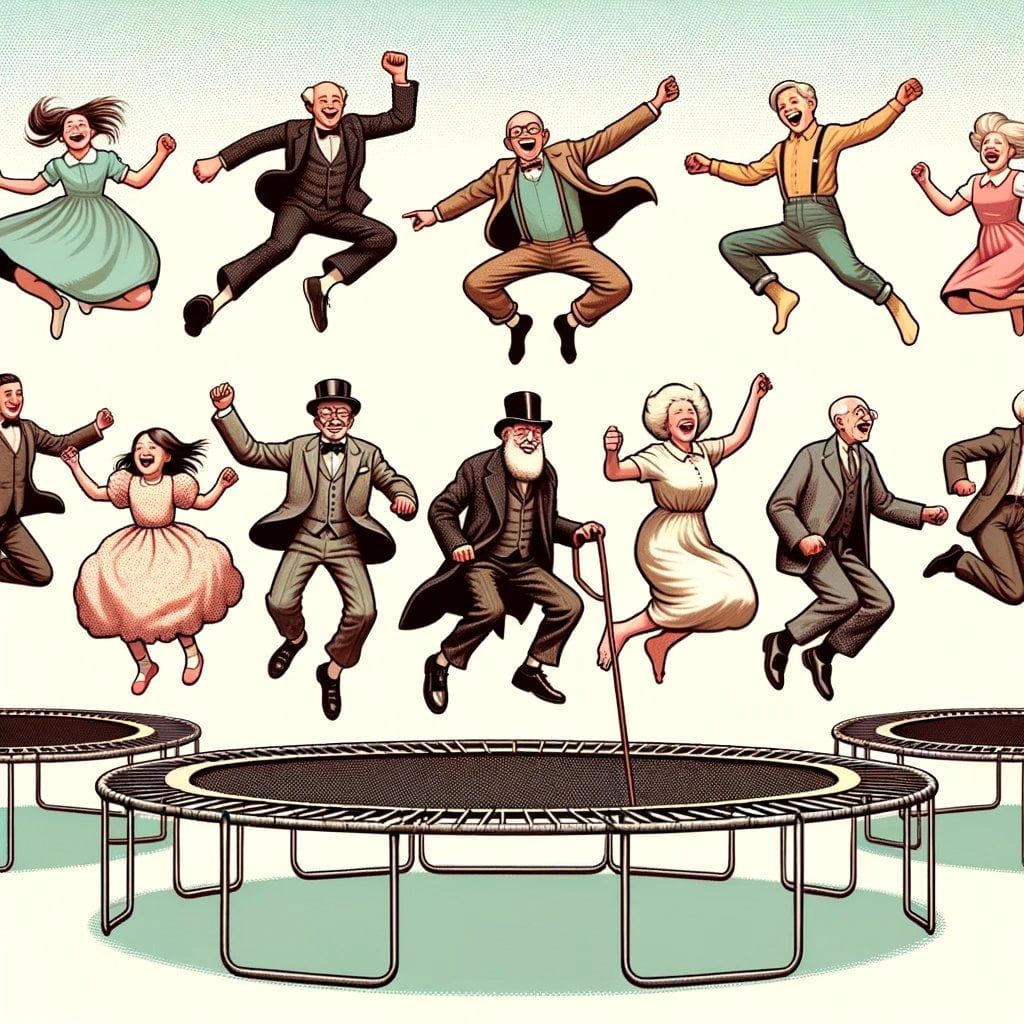This article will transport you back in time as it explores the intriguing origins and evolutionary trajectory of trampolines. “Jumping Through Time: Trampoline History Revealed!” will provide an in-depth exploration of the illustrious history surrounding these springy marvels. Trampolines, from their modest inception to their meteoric ascent in prominence, have not only captivated the affections of a vast audience but have also exerted a profound influence across diverse domains. Therefore, fasten your seatbelts and get ready for an adrenaline-pumping voyage that will reveal the intriguing history of trampolines!
Trampoline History
Trampolines have undergone significant development since their inception in antiquity. These springy apparatuses, which originated with the wooden horse employed by the Romans for instructional purposes in mounting and dismounting, have transformed into a global phenomenon. Embark on an intriguing exploration of the trampolines’ illustrious history, which commences with their inception and subsequent surge in popularity. Behold diligently as we traverse temporally!
Larry Griswold and George Nissen are the inventors.
In 1936, two American gymnastics devotees, Larry Griswold and George Nissen, invented the modern trampoline, an innovative step forward. Motivated by circus trapeze performers who executed acrobatic maneuvers while bouncing on a net, Nissen and Griswold refined their notion. The device was constructed by affixing an elastic fabric to a metal frame, enabling individuals to ascend to greater altitudes and encounter the exhilaration of gravity-defying motion.
“George Nissen and Larry Griswold transformed the ordinary act of bouncing into an extraordinary sensation that would captivate generations to come.”
Trampolines Used for Pilot Aerial Training During World War II
Trampolines served an unusual purplayedduring World War II by being utilized to train Navy pilots. The Navy acknowledged the potential of these inflatable platforms to facilitate the instruction of air sense and the improvement of spatial awareness. By performing aerial maneuvers and leaping, pilots would simulate the movements required for flight. By means of this novel training approach, aviators were capable of honing their balance, coordination, and reflexes, thereby augmenting their proficiency and self-assurance in the atmosphere.
As the World War II era dawns, the inaugural trampoline competition takes place.
Trampolining transitioned from military training to widespread popularity following World War II. The inaugural trampoline competition took place in 1946, ushering in an unprecedented era for this distinctive sport. Acrobatic performers captivated spectators with their awe-inspiring demonstrations of grace and dexterity as they executed somersaults and flips through the air. As a result of this competition’s triumphs, trampolining came to be regarded as a sport of distinction and esteem.
Sports Recognized as Competitive: Adoption by the NCAA and AAU
1947 marked the official recognition of trampolining by the Amateur Athletic Union (AAU) and the National Collegiate Athletic Association (NCAA) in response to its increasing popularity. Trampolining emerged as an indispensable component of the gymnastics discipline, affording competitors an avenue to exhibit their prowess and ingenuity. The acknowledgment bestowed by esteemed athletic organizations served to reinforce the position of trampolining within the realm of competitive sports.
“Trampolining blossomed into a sport that not only thrilled spectators but also challenged athletes to push the boundaries of what was previously thought possible.”
| Pros | Cons |
|---|---|
| Enhances spatial awareness | Risk of injury |
| Develops coordination and balance | Requires proper supervision and safety precautions |
| Boosts athleticism and creativity | May take time to master the techniques |
| Thrilling and captivating for spectators | Limited availability in some areas |
From its humble beginnings as a wooden horse used by the Romans, the trampoline has evolved into a source of exhilaration, athleticism, and artistic expression. Its journey throughout history showcases the incredible impact it has had on various fields, from military training to competitive sports. Whether bouncing for fun or competing for glory, trampolining continues to captivate people of all ages, reminding us that sometimes, all we need is a little bounce in our lives.
“The trampoline’s journey from an ancient wooden horse to a modern apparatus for aerial acrobatics illustrates the remarkable transformation of an ordinary concept into an extraordinary phenomenon.”
Trampolines are not just for kids anymore. Did you know that trampolining was originally a competitive sport in the Olympics? That’s right, athletes would perform flips, twists, and jumps on the trampoline to earn medals. It’s no wonder why trampolining has become so popular over the years. If you’re curious to learn more cool facts about trampolines, click here and get ready to be amazed: cool facts about trampolines. Get ready for a fun and bouncy adventure!
FAQ
What is their historical origin?
Trampolines originated from a wooden horse that the Romans employed as a training device for mounting and dismounting.
Who developed the contemporary trampoline?
1936 saw the invention of the modern trampoline by George Nissen and Larry Griswold.
How was the trampoline utilized in the course of World War II?
A: Initially supplied to the Navy during World War II, the trampoline was intended to instruct pilots in air sense.
When was the inaugural competition for trampolines held?
Thelowing World War II, the inaugural trampol1946,competition was conducted in 1946.
When were trampolining recognized by the NCAby theand AAU as a sport?
Trampolining was recognized as a disby thenct discipline within gymnastics by the NCAA and AAU in 1947.
- Unveiling the Enigma: Mansoureh Khojasteh Bagherzadeh’s Public Appearances & Private Life in Iran - July 18, 2025
- Unveiling the Mystery: Mansoureh Khojasteh Bagherzadeh’s Husband: A Rare Glimpse into a Private Life - July 18, 2025
- Unveiling Masoud Khamenei’s Mother: Power, Influence, and Iran’s Future - July 18, 2025



















